- Home
- Hammond Innes
The Lonely Skier
The Lonely Skier Read online
Contents
Cover
About the Author
Also by Hammond Innes
Dedication
Title Page
Introduction
1. A Journey to the Dolomites
2. A ‘Slittovia’ is Auctioned
3. Murder for Two
4. My Shroud is Driven Snow
5. Back Across the Glacier
6. An Ugly Scene
7. The Story of the Gold
8. We Dig Our Own Grave
9. Col da Varda in Flames
10. The Lonely Skier
Copyright
About the Author
Ralph Hammond Innes was born in Horsham, Sussex, on 15 July 1913 and educated at Cranbrook School, Kent. He left school aged eighteen, and worked successively in publishing, teaching and journalism. In 1936, in need of money in order to marry, he wrote a supernatural thriller, The Doppelganger, which was published in 1937 as part of a two-year, four-book deal. In 1939 Innes moved to a different publisher, and began to write compulsively, continuing to publish throughout his service in the Royal Artillery during the Second World War.
Innes travelled widely to research his novels and always wrote from personal experience – his 1940s novels The Blue Ice and The White South were informed by time spent working on a whaling ship in the Antarctic, while The Lonely Skier came out of a post-war skiing course in the Dolomites. He was a keen and accomplished sailor, which passion inspired his 1956 bestseller The Wreck of the Mary Deare. The equally successful 1959 film adaptation of this novel enabled Innes to buy a large yacht, the Mary Deare, in which he sailed around the world for the next fifteen years, accompanied by his wife and fellow author Dorothy Lang.
Innes wrote over thirty novels, as well as several works of non-fiction and travel journalism. His thrilling stories of spies, counterfeiters, black markets and shipwreck earned him both literary acclaim and an international following, and in 1978 he was awarded a CBE. Hammond Innes died at his home in Suffolk on 10 June 1998.
ALSO BY HAMMOND INNES
Air Bridge
Atlantic Fury
Attack Alarm
Campbell’s Kingdom
Dead and Alive
Delta Connection
Golden Soak
High Stand
Isvik
Killer Mine
Levkas Man
Maddon’s Rock
Medusa
North Star
Solomons Seal
Target Antarctica
The Angry Mountain
The Big Footprints
The Black Tide
The Blue Ice
The Doomed Oasis
The Land God Gave to Cain
The Last Voyage
The Strange Land
The Strode Venturer
The Trojan Horse
The White South
The Wreck of the Mary Deare
Wreckers Must Breathe
To
PETER WILSON
This book will, I hope, recall many pleasant memories of places we have visited together. And because its setting is the Dolomites, it will particularly remind you of a little albergo near the Ponte nelle Alpi where we met for a drink. You were on your way up to Cortina. I was coming down from Cortina to Venice.
Aldbourne, 1946.
The Lonely Skier
Hammond Innes
With an introduction by
Stella Rimington
Introduction
The Second World War provided both the inspiration and the readership for a new wave of British thriller writers, of whom Hammond Innes was one. He and others such as Alistair MacLean, and later Ian Fleming, drew on their wartime experiences to set new standards of accuracy in their depiction of places and in the technical details underpinning their stories. They were writing at first for a predominantly male audience who to one degree or another shared those wartime experiences and demanded authenticity, a fast pace and hints of glamour not easily come by in the immediate post-war world. It was a readership facing unemployment and the very real possibility of a renewed World War. Perhaps that helps to explain an epic, almost fearful, element in Hammond Innes’s writing, which it retained throughout his long career – he published his last novel in 1992.
Hammond Innes was the first of the new generation out of the trap. He had published several thrillers before the war and he wrote two more during the war, while he was serving in the Royal Artillery. None had attracted much critical attention, though he had shown what he could do in Wreckers Must Breathe, published in 1940 just before he joined the army. But it was not until 1947 and the publication of The Lonely Skier that he began to achieve favourable notice, and from then on his feet were set firmly on the path that would lead to his becoming the most wide-ranging and the longest lasting of all the post-war thriller writers. Four of his early books, including The Lonely Skier, were made into films, but it was not until he published his masterpiece, The Wreck of the Mary Deare, in 1956 that he joined the ranks of the super-best-sellers and could buy his own ocean-going yacht to scour the world for new scenery and plots – and also to discover a new ‘green’ philosophy.
The Lonely Skier is not the classic tale of adventure that its title might suggest. Its main character, Neil Blair, who performs the role of commentator on the action, is an ordinary man who finds himself in an extraordinary situation. Demobbed, unemployed and penniless, he stumbles on a job with the vaguest of briefs: to go to a mountain hut, a rifigio on Col da Varda above Cortina in the Italian Dolomites, to pretend to be writing a film script and to watch and report what happens. He finds himself cooped up in the rifigio, to which the only access is via a ‘slittovia’, a dodgy-sounding cable sleigh, with an assorted bunch of suspicious-looking Europeans. Who are they and why are they there? This is not so much a whodunnit as a who-dun what and why? The tale develops out of past relationships, only gradually disclosed to the reader, coupled with a good deal of retrospective wartime skulduggery, with the hero when he eventually arrives acting as a catalyst, forcing the situation into the open.
If this sounds like a plot that Agatha Christie might have produced, I am doing it a grave injustice. It is far more than that. This plot is woven from the torn fabric of post-war Europe. As one of the characters observes, it is ‘a strange, sick Europe . . . Beyond men and women here who have grown fat on war, there is a vast human jungle . . . It is the survival of the fittest.’ Hammond Innes creates a small piece of that human jungle inside the rifigio.
The ordinary man who finds himself in extraordinary circumstances is a theme beloved of one of Hammond Innes’s contemporaries, writing just before the war, Eric Ambler. But whereas Ambler sets his plots in the throbbing heat of the Côte d’Azur, Hammond Innes chooses for this novel the freezing snowfields, glaciers and high passes of the Dolomites. It is not only the human jungle that has to be confronted and conquered but the mighty forces of nature. The idea of man versus nature is a constant theme in Innes’s stories. In Wreckers Must Breathe it is the subterranean world of caves – the silence, the darkness and the risks of flooding and subsidence – that must be faced. Often, as in The Blue Ice, published a year after The Lonely Skier, it is the sea in all its moods. But in The Lonely Skier it is the sea’s opposite, the mountains, and all the fearful difficulties and obs-tacles that high altitudes can produce and that man must overcome by skill, perseverance and daring.
Though his attitudes and concerns were to change and become wider with the expansion of his readership and the trend of world events, Innes continued to be fascinated by the idea of man confronted by the forces of nature. But in his attitude to that struggle he eventually switched sides. In the earlier books, and The Lonely Skier is one example
, it is heroic for man to face nature’s obstacles and overthrow them through his human qualities as well as his skill. Later in his life, Innes saw Man as ‘a rogue species and doomed’, a violent creature whose ‘will to conquer is invincible’ but whose egotism and greed are destroying the balances of nature. ‘Man is a killer and he carries the seed of his own destruction’, and ‘the world seems to be shrieking aloud at the cruelty of humans’. His later heroes have the task of exposing, challenging and resisting the consequences of follies to which they themselves are prone. And all along, in the earlier as well as in the later books, the hero is a lonely man driven by a mission in the course of which he self-destructs.
Nor are Innes’s heroes all particularly nice people. The true hero in The Lonely Skier is not Neil Blair, the ordinary man; Blair is instead the observer, the commentator. The hero is the man who gives him the job, Engles, a former British Military Intelligence officer. Engles could be ‘a cruel, sneering devil’, cool, insolent to his friends and enemies alike, and incidentally, with a style rather too direct for a spy. His savoir faire is impeccable, but he himself confesses that ‘pride . . . and my insatiable desire for excitement’ are what drive him on. His upper lip remains at all times stiff: ‘I didn’t mean to land you in a mess like this. Make no mistake about it, Neil – we’re in a pretty tight spot’ – rather an understatement in the context. A whole phalanx of fictional British heroes from Richard Hannay to Dick Barton would have applauded the words, though they would not have approved of Innes’s habit of killing his heroes.
Though women play a quite considerable part in his dramas, on the whole, Innes’s heroes are misogynists and his narrators, who, as in The Lonely Skier, are usually distinct from the heroes, are only marginally less so. In The Blue Ice the narrator actually marries, or at least lives with a woman who fully shares his perils, just as Innes’s own wife shared his wanderings about the oceans in search of locations for his plots. Carla, the only significant woman in The Lonely Skier, is a nasty piece of work – ‘all of a man’s baser thoughts come true’ – who gets her come-uppance at the hands of her serially murderous lover. In other respects she resembles other of Innes’s female characters in having too wide a mouth for conventional good looks. Readers looking for feminine interest or steamy sex will be disappointed.
His real love is landscape and seascape both in its grand sweep and in the vivid depiction of its tiny appearances. The Lonely Skier is full of both: the ‘wind . . . took hold of the trees and shook them like a terrier shakes a rat. The snow fell in great slabs from their whipping branches . . . the wind . . . driving the snowflakes almost horizontal to the ground’. His scenes of skiing and sailing are wholly convincing in the same accurate, mind-catching detail of their small touches, and also in their treatment of natural phenomena and scenery in all their awesome majesty. Up in the high pass ‘the dark peaks jostled one another, battling to be the first to pierce the heavens, and all about them their snow skirts dropped away to the world below, the nice comfortable world where human beings lived.’
As with Eric Ambler before him, Innes took immense trouble to get his technical details right. In his own foreword to The Blue Ice, set largely in Norway, he tells us that ‘it was necessary for me to go over the entire ground including the long trek from Aurland to Finse over the Sankt Paal glacier’. For the same book he took a job in a vilely smelly whale-meat factory and completed his first serious trip in an ocean racer. In The Lonely Skier the skiing sequences are very clearly based on his personal experience both of the terrain and of the finer arts of the sport, learned on an army skiing course he took shortly before writing the book. He applies his knowledge to building the tension towards a murderous and eminently plausible climax, and to expressing the fear of death, taking the reader with him all the way in a vivid description of the accident that ends a tremendously fast descent down a steep mountainside.
The snow slope beyond flung itself at me. A cold, wet world closed about me in an icy smother . . . I sobbed for the air I needed . . . Then the grey light of the sky showed through a hole in the snow . . . The truth dawned on me slowly as I lay there in the snow. [He] had meant this to happen.
Similarly Innes studied official procedures very closely, as demonstrated in his mastery of the court scene in Mary Deare and of maritime insurance procedures for his later books, and he is scrupulously fair to the officials involved. This care to get atmosphere and background right is his great strength, lending conviction to his narratives, a trait which he shares with contemporaries such as Fleming, later with le Carré, and which culminates in Frederick Forsyth – the latter, like Fleming and Innes, a journalist by training.
Innes is always readable and his earlier books rank very high as taut, fast-moving, page-turning tales of adventure, marked by strong elements of inevitability and self-compulsion. But he is more than just a thriller writer; he is essentially a moralist. Human motives and relationships matter more to him than individual personalities or even situations. For him, villainy begins with egotism and takes the form of cruelty and greed. The concerns and fears for the planet which he developed later in his life and his scepticism about the motives of business and governments spring from the same idea. Though he wrote of heroes and lived his own life on a heroic scale, he understood that heroism can be a form of egotism and serve evil as well as good. In The Lonely Skier, one of the more intelligent of the assorted bunch of villains in the rifugio says to Engels, ‘We should help each other . . . these [other] people . . . are only interested for themselves . . . Whereas you and I, we have a mission.’ The words, spoken by a crook, contain a warning. Heroism has two sides and only one of them is good.
Stella Rimington, 2013
1
A Journey to the Dolomites
I HAD SEEN all the rushes of the film, but it was the first time I had sat through the full cut version. The rushes had been pure routine, short slashes of film to be viewed critically for alterations and cuts. They had meant no more to me than pages torn at random from a manuscript. They were strips of celluloid to be cold-bloodedly hammered into shape.
But this was different—to sit there in the dark of the Studios’ theatre and have the whole grim story retold on the screen. It wasn’t, of course, exactly the way it had happened. It couldn’t be. No audience would have stood for it told that way. We had twisted it about a good deal to make a straight story of it. But it was all there, so that, with a bag of sticky sweets and hot hands clasped in the dark, any one with a couple of bob to spare could lose themselves for an hour and twenty-three minutes and live in the atmosphere of tension and fear in which we had lived in that chalet in the heart of the Dolomites.
The film opened with an approaching shot of the chalet from the slittovia, just as I had seen it that first time. And as the cable sleigh neared the chalet, I lost all critical sense in my absorption in the story. For I knew what the inside of the hut would look like before the camera planed in through the window. I knew who would be there and what they would be saying. I sat and lived the story all over again.
You may say—how could I help knowing who would be there and what they would be saying since I had written the script? That is true. But it is one thing to make up a story; quite another to have written of things that actually happened—written with the dead, so to speak, looking over my shoulder. It was Engles’ idea—to film a thriller that had really happened. He it was who had introduced me to the characters, helped to set the stage and had had a large part in directing the events of the story. He had even given me the title—typed it out in black and white with fingers already grown stiff and cold. The fact that I had written the script and another man had directed the film did not prevent it from seeming somehow entirely his work.
Thus, to me, the final version had something of a nightmare quality. And as the story I knew so well unfolded, each character on the screen transformed itself in the sockets of my brain and took on new features—features I had known. It was not the actors pla
ying their parts that I saw, but the real people as they had once been. It was like a parade of ghosts. So many of them were dead. And I had come so near to death myself out there on the cold snow slopes below Monte Cristallo.
The story was so vivid in my mind. I did not need thousands of feet of film made at a cost of over £100,000 to recall it. Let the dead lie buried, not march like pale spectres out of a strip of celluloid, mouthing words they had once uttered when they were flesh and blood. It was unnatural and somehow rather horrible to sit there in a comfortable seat and see the whole thing neatly tied up with box office ticket ribbons ready for sale to the public.
This must sound a pretty strange opening to a story that has nothing of ghosts in it, but which tells of an ill-assorted group of people, of greed and violence in a strange setting. If I have begun at the wrong end, it is because it was after seeing the neat little parcel we had made of the film that I had the urge to tell the story exactly as it happened to me. I don’t want to see the film again—ever. However big a success it is—and it has all the ingredients of success—I have seen all I want to see of it. Now I’ll tell the story once and for all just as it happened. Then perhaps my mind will be exhausted with the telling of it and I shall be able to forget all about it.
Like most of the more startling events in life, I stumbled into it quite by chance. It was the First of December—a grey, wet day that fitted my mood—and it was in a chemist’s shop of all places. Derek Engles was standing at the dispensing counter, drinking a dark fizzy pick-me-up out of a beaker. He caught my eye over the rim of it and frowned. He always liked people to believe that drink had no effect on his constitution. He took liquor like most people take food. His brain worked best that way. Everything he did and said had to be whipped up, and drink was the stimulant. He never ate breakfast and cured his hangovers by secretly consuming aspirin, which he always carried about with him.

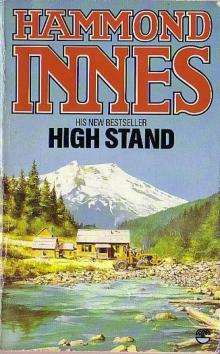 High Stand
High Stand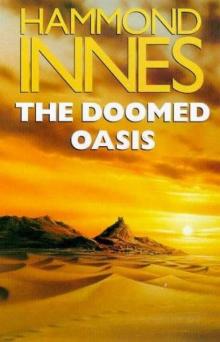 The Doomed Oasis
The Doomed Oasis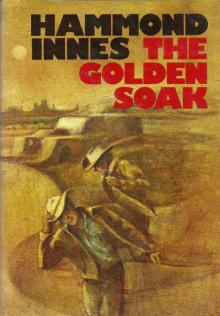 Golden Soak
Golden Soak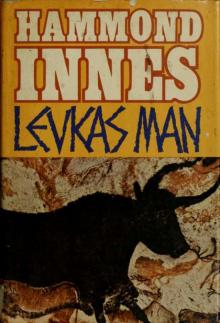 Levkas Man (Mystery)
Levkas Man (Mystery) The Strange Land
The Strange Land Dead and Alive
Dead and Alive Attack Alarm
Attack Alarm The Strode Venturer
The Strode Venturer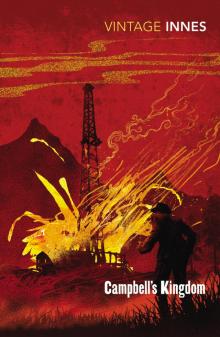 Campbell's Kingdom
Campbell's Kingdom North Star
North Star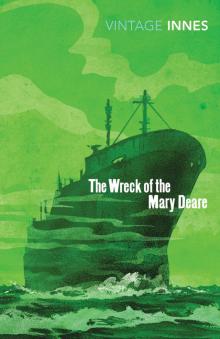 The Wreck of the Mary Deare
The Wreck of the Mary Deare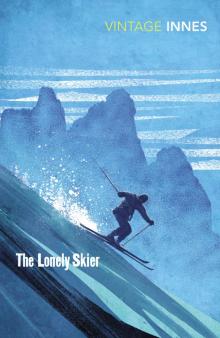 The Lonely Skier
The Lonely Skier The Black Tide
The Black Tide The Trojan Horse
The Trojan Horse Medusa
Medusa Air Bridge
Air Bridge Maddon's Rock
Maddon's Rock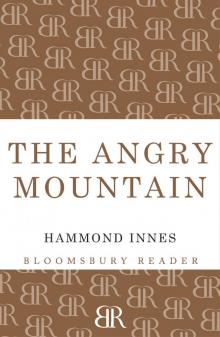 The Angry Mountain
The Angry Mountain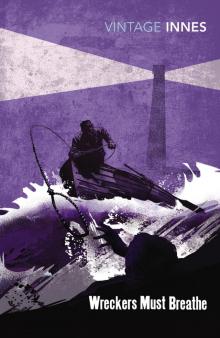 Wreckers Must Breathe
Wreckers Must Breathe Solomons Seal
Solomons Seal The White South
The White South